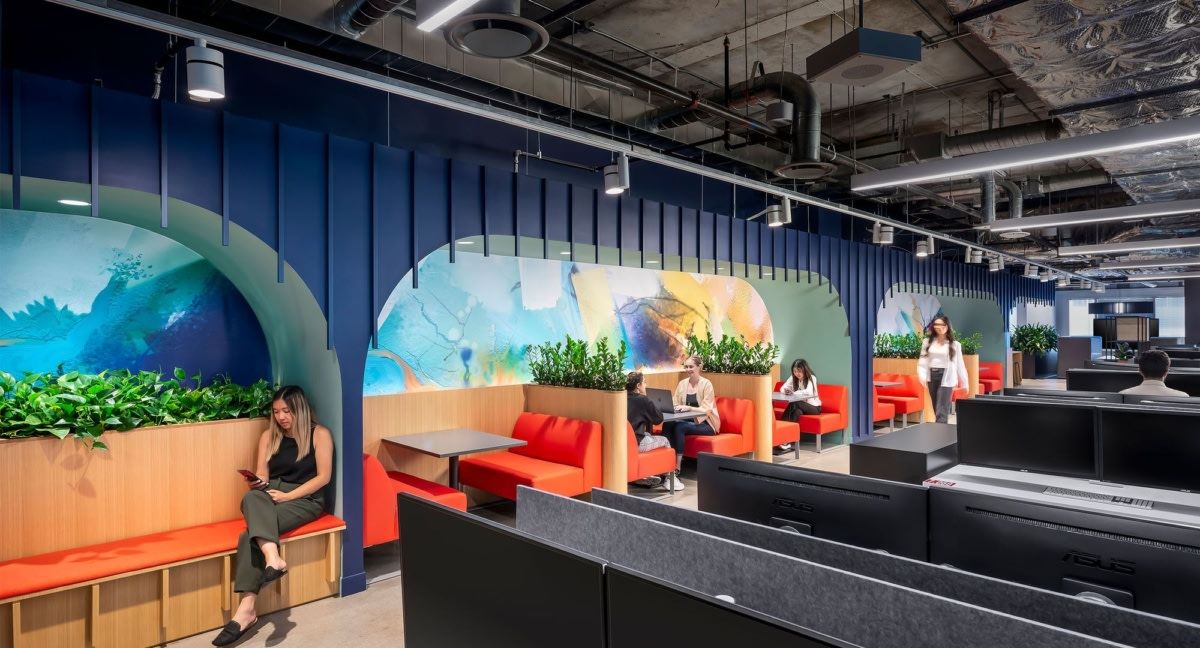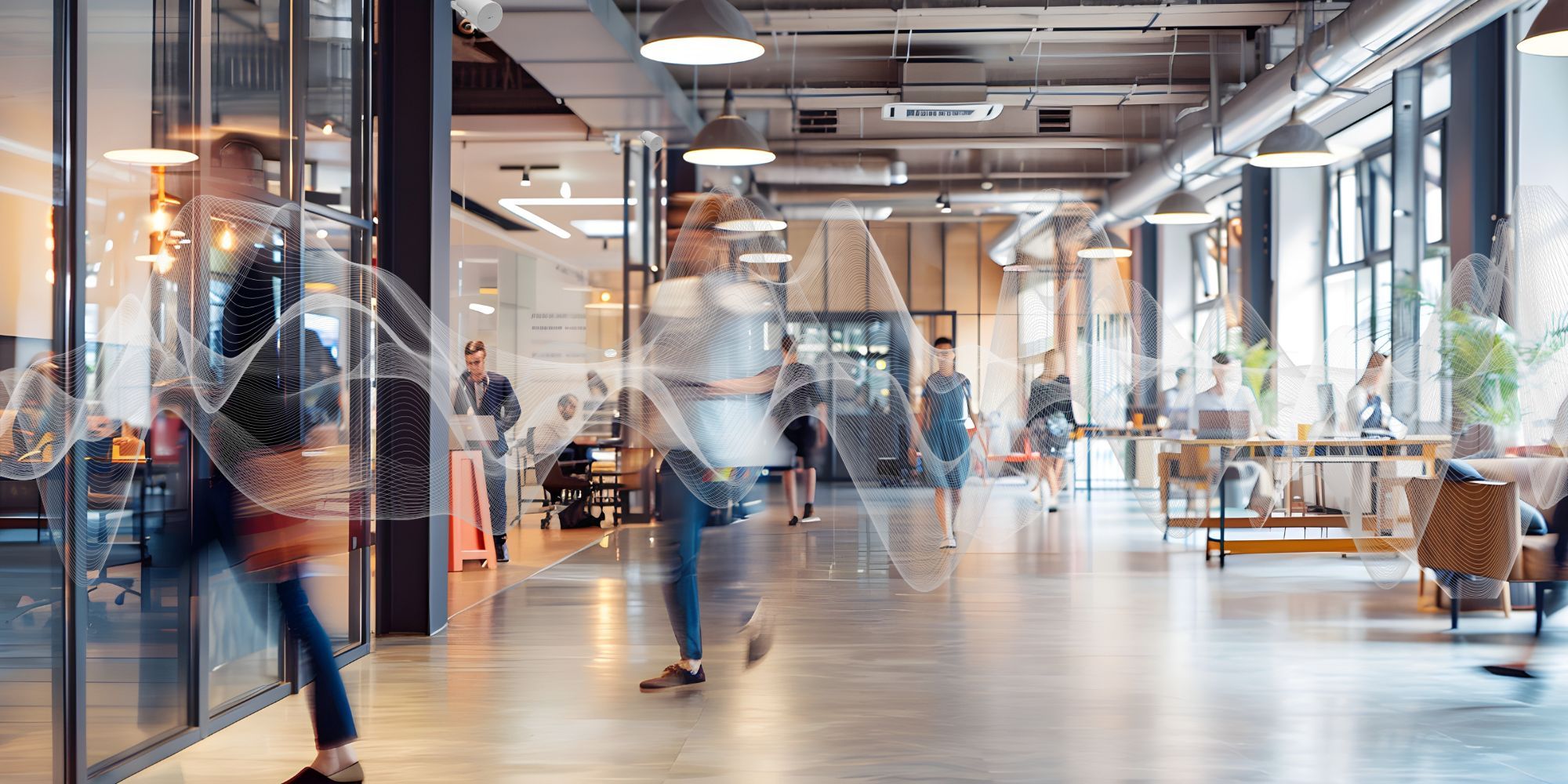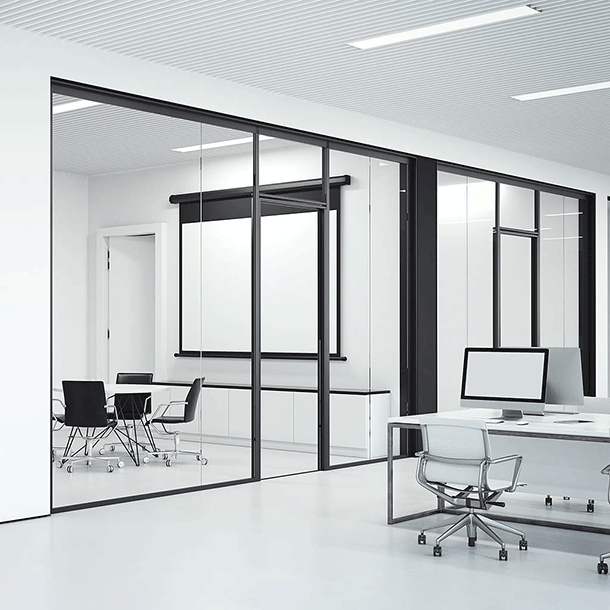In a time when organizations are rethinking their offices to support hybrid work and purposeful in-person experiences, one issue continues to top employee complaints: noise.
According to the Office Space Report 2025 by Robin, which surveyed over 400 office decision-makers, the number one reason employees avoid the office is distractions, with noise—especially from conversations and nearby teams—being a major contributor. In fact, new survey by LinkedIn Corp. more than 60% of respondents said they avoid coming into the office when they need to focus. This insight speaks volumes: the workplace, as it stands today, is failing to support the deep work employees expect when they choose to commute in.
In the report, organizations are encouraged to invest in consolidated technology to reduce barriers to productivity and foster collaboration in a seamless hybrid work environment. Sound masking aligns perfectly with this approach—as an integrated part of workplace infrastructure, it enhances acoustic comfort across open offices, meeting rooms, and focus areas. By minimizing distractions and protecting speech privacy, sound masking supports a unified, tech-enabled environment that empowers employees to perform their best—whether they’re in for focused work or team collaboration.
The Real Cost of Poor Acoustics
Let’s consider this: hybrid workers are now choosing when and why they go into the office. The report shows a growing trend of “quality over quantity” in office attendance. Employees aren't just showing up to be seen—they’re coming in for meaningful collaboration or focused individual work. But if the acoustic environment isn’t supporting these goals, that commute becomes a waste of time and energy.
Open-plan layouts, now common in downsized or redesigned offices, only amplify the problem. While these setups encourage visibility and teamwork, they often lack the acoustic zoning required to balance speech privacy and sound comfort. The result? Constant interruptions, overheard conversations, and a growing resistance to return to the office at all.
How Sound Masking Helps
Sound masking systems like those designed by Soft dB add a carefully engineered background sound, similar to airflow, across an office. This ambient layer reduces speech intelligibility and minimizes noise distractions, especially in open areas, meeting zones, and near shared desks. It’s not about making things louder—it’s about making speech less intrusive.
In one recent case, a tech company in Boston implemented our adaptive sound masking in their hybrid workspace after employee complaints about a lack of focus. Post-installation surveys showed a 40% decrease in noise-related complaints and an increase in satisfaction with the in-office experience.

Designing Offices for Purposeful Presence
As Robin’s report highlights, companies aren’t just trying to fill seats anymore—they’re curating spaces that make the office worth the trip. Comfort, acoustics, and wellness are central to that experience.
Integrating sound masking into office design isn't just a tech upgrade—it’s a strategic investment in employee performance and satisfaction. Whether you’re renovating a floor or planning an entirely new space, acoustic planning should be as important as lighting and layout.
Because when employees say noise is the reason they stay home, it’s time to listen.



